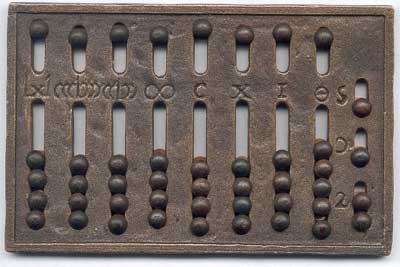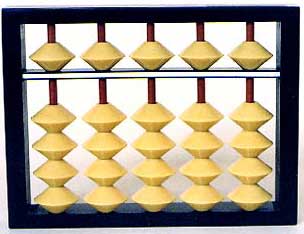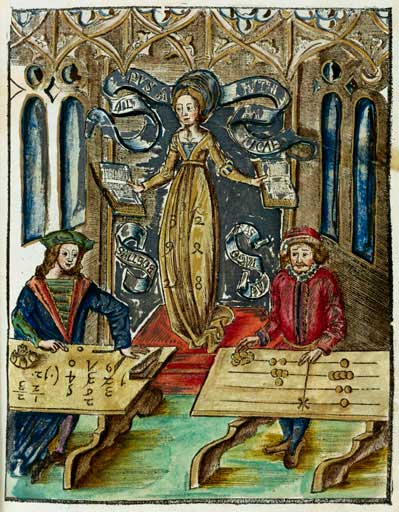5 Facts About the Abacus
- The origin of the abacus is still debated. Similar counting frame objects are believed to have been used in ancient China and Babylon.
- An abacus is known as a Schoty in Russian and a Suanpan in Chinese.
- Modern abacuses are used to assist students with visual impairments.
- Using an abacus as a calculator has been shown to improve children’s mental math capabilities.
- Modern computer operating systems use binary abacus to read numbers.



Abacus History
As the most ancient calculator known, the origin and inventor of the abacus is unknown. It’s been used for centuries in China and has a long history of use in Ancient Greece, Rome, Russia Japan, and Babylon.
The name is of Greek origin. Abax means “flat surface” in Ancient Greek. It was taken by the Romans and became abacus in Latin. Its pronunciation in English is “a-buh-kuhs.” This pronunciation stresses the first “a.”
Despite its ancient history, the abacus continues to be used in modern times. The modern abacus is attributed to Tim Cranmer, who invented the Cranmer abacus in 1962. It’s still used for teaching individuals who are blind or visually impaired.

Abacus: How It Worked
Despite its long history and unknown inventor, the abacus has worked basically the same way throughout the centuries. It’s a fairly straightforward calculator that is still used in many countries in schools or markets for counting.
Most abacuses are made of a frame with wood rods and beads. Ancient devices used marble or stone parts. The idea of this counting frame is that each rod represents a sequential place value. Starting either with the tens place or a decimal place, increasing from right to left.
Many designs have four or five beads on a bottom row, with one to five beads on the top row. Pushing one bead from the top row to the center counts as five. You can then push additional beads from the bottom or, if available, from the top to count up to nine in that place value.
This counting frame allows individuals to track, add, subtract, multiply, and divide numbers easily. It helps ensure quick calculations when working with large numbers and makes the calculation process visible to both buyer and seller or teacher and student.
Abacus: Historical Significance
As commercial transactions became more complicated, a calculating tool was essential to make quick calculations and avoid errors. This origin, whether in Ancient China or Babylon, has been used throughout history and is continued to be used as a convenient calculator for commercial transactions.
The abacus is also an ancestor of the modern calculator and computer. Binary digit, the numbering scheme used to encode and decode digital messages, is based on an abacus design. The two possible binary digits are 0 and 1, but they are also described as low and high, which are the two possible positions for beads on an abacus.
The Cranmer Abacus
The Cranmer abacus is a modified version of the Japanese abacus or sorobon. This device was designed by Terence V. Cranmer in 1962. Shortly thereafter, the American Printing House for the Blind began selling the device, and they continue to sell it today.
This inexpensive, 13-rod abacus features a red felt backing which prevents beads from slipping during calculations. It measures 6 1/8” x 3 1/4” and the bead diameter is 3/8”. The device is considered to be a valuable teaching tool for visually impaired students. It can be used to perform addition, subtraction, multiplication, and division.
Cramer was blind from childhood. In his early years, he crafted and sold plastic jewelry. After being employed briefly at Kentucky Industries for the Blind, Cramer was a piano technician for 10 years. In 1952, he was employed by the Kentucky Division of Rehabilitation Services for the Blind. He was also a member of the National Federation of the Blind.
Cramer invented several devices, including a “Braille display switching matrix and circuit utilizing the same,” U.S. patent # 4,037,200.